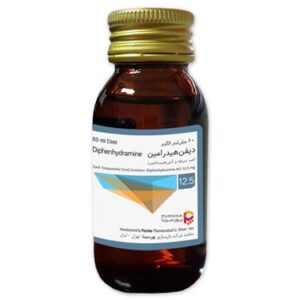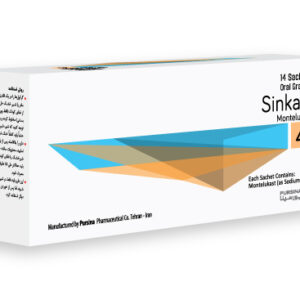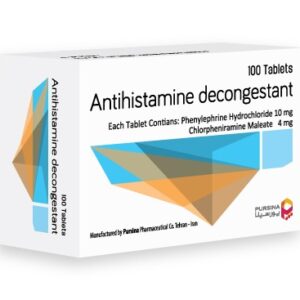Description
How Supply
Each 5 ml syrup contains 5 mg Cetirizine HCl. 60 ml syrup in a bottle.
Category
Antihistaminic (H1-receptor)
Mechanism of Action
Cetirizine hydrochloride is a potent second-generation histamine H1 antagonist that is effective in the treatment of allergic rhinitis, chronic urticaria, and pollen-induced asthma.
Pharmacokinetics
Absorption: Well absorbed after oral administration.
Protein binding: 93 %
Elimination: Approximately 60% of the total dose administered is excreted unchanged in urine within 24 hours; about 10% is excreted in feces.
Half – life: Elimination 8 hours (range 6.5 to 10 hours)
Dosage and Administration
Usual adult and adolescent dose:
5 to 10 mg once a day.
Note: In patients with reduced creatinine clearance (< 31 mL per min) and with hepatic impairment, dose of 5 mg once a day is recommended.
Usual adult prescribing limits
10 mg a day.
Usual pediatric dose
Children up to 2 years of age
Safety and efficacy have not been established.
Children 2 to 6 years of age
2.5 mg once a day. The dosage may be increased to a maximum daily dose of 5 mg, given as 5 mg once a day or 2.5 mg every 12 hours.
Children 6 years of age and older
5 or 10 mg once a day.
Note: The dosage should be decreased in patients who have reduced renal function or hepatic function impairment. In patients up to 6 years of age with renal or hepatic dysfunction, cetirizine use is not recommended. For children 6 years of age and older, the lower dosage of 5 mg once a day should be used.
Pregnancy and breast feeding
FDA pregnancy: category B. The extent of distribution into human breast milk is unknown.
Side Effects
- Those indicating need for medical attention:
Anaphylaxis; heart beat; hepatitis or other hepatic function abnormalities; hives.
- Those indicating need for medical attention only if they continue or bothersome:
Drowsiness, weakness and fatigue; dryness of mouth, nose or throat; stomach pain or nausea; headache; increased appetite or weight gain; confusing; disorders of urination; dizziness; photosensitivity; constipation; tremor.
Precautions
- Avoiding use of alcohol or other CNS depressants.
- Caution if drowsiness occurs.
- Possible dryness of mouth; using sugarless gum or candy, ice, or saliva substitute for relief; checking with physician or dentist if dry mouth continues for more than 2 weeks.
- Not using concurrently with other sedatives, tranquilizers or appetite suppressants.
- This drug may mask ototoxic effects of large doses of salicylates.
- Possible interference with skin tests using allergens, need to inform physician if using medication.
Drug interactions
Inform your doctor if you are taking any of the following medicines: Antacids, Magnesium or aluminum containing, Alcohol, CNS-depression-producing medications, Anticholinergics or other medications with anticholinergic activity, Apomorphine, Erythromycin, Fluconazole, Itraconazole, Ketoconazole, Metronidazole, Miconazole, Furazolidone, Ototoxic medications, Photo sensitizing medications.
Storage
Store below 30˚c. Store in a tight container. Keep out of reach of children.




